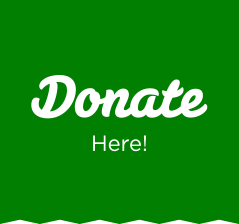Watch his mini-documentary.
VIDEOGRAPHY BY Two Tie Media
JJ Lilley
Extraordinary Circumstance: Noonan Syndrome & TBI
Book: The Fire of Friendship
Words by Dallas Graham
Design & Illustration by Dallas Graham
Photography by Shannon Grey
Filming by Two Tie Media (Jack Brinkley & Shannon Grey)
Editing by Jeri Larsen
JonathonJerome Lilley, who prefers to be called JJ, is an extraordinary, entertaining nine-year-old boy who lives in Olympia, WA. JJ has been a fighter from day one, being a preemie at thirty-seven weeks and having a reaction to the bilirubin lights. He was seen by a cardiologist at four months, was given his first heart catheter at eight months, and his second catheter at thirty-one months. JJ then had an open-heart surgery at thirty-five months, having been diagnosed with Noonan’s Syndrome at thirty-three months. Finally, this diagnosis gave a lot of answers as to why his heart was having problems and why the other procedures were not working. JJ has experienced numerous health issues, from failure-to-thrive as an infant to needing an appendectomy before turning four years old. The chest wires from his heart surgery were removed at age five, and he had dental surgery at age six. Nothing stopped this courageous boy in anything he did. He decided at age three that he wanted to be a dancer, and he began learning and performing all genres of dance. He started to compete at age four, and his love of dance has done nothing but grow. Tragically, at the age of seven, he was hit by a car and suffered a traumatic brain injury. He had to relearn a lot of things, but his love for dance never changed. However, he could no longer compete—that is, until his mom started a dance/cheer squad for him in Special Olympics. Now JJ has found a new passion, not only for himself, but one that will help and inspire others.
Browse images from his workshops.
Photography by shannon grey
Read his book.
COPYRIGHT © 2020 BY DALLAS GRAHAM. ALL RIGHTS RESERVED. NO PART OF THIS BOOK MAY BE REPRODUCED IN ANY FORM BY ANY ELECTRONIC OR MECHANICAL MEANS INCLUDING PHOTOCOPYING, RECORDING, OR INFORMATION STORAGE AND RETRIEVAL WITHOUT PERMISSION IN WRITING FROM THE COPYRIGHT HOLDER.
learn more about
Noonan Syndrome & Traumatic Brain Injury
Noonan syndrome is a genetic disorder which can cause different symptoms throughout the body. These include distinct facial features, heart problems, and skeletal changes. The disease can vary widely in how seriously it impacts someone’s life. Boys are affected more commonly than girls. Noonan syndromes is caused by a genetic mutation passed down from the parents.
Symptoms and signs of Noonan syndrome include widely spaced, light-colored eyes, short neck, small jaw, low ears, scoliosis, heart disease, swelling, short height, and bleeding problems. In some cases, more serious complications can appear. Noonan syndrome patients are at a higher risk of leukemia. The syndrome doesn’t impact intellectual abilities.
Treatment for Noonan syndrome is mostly to help with symptoms and make life easier. People with Noonan syndrome might need a lot of doctor check-ups. Some patients live relatively normal lives while others will need more treatment. Sadly, Noonan disease can be life-limiting, often due to heart disease.
Traumatic brain injury (TBI) is damage to the brain caused by an outside force or impact (like hitting your head really, really hard). In the most serious cases, it can result in long-term disability. TBI can cause symptoms ranging from vomiting, brief loss of consciousness, and reduced coordination (or clumsiness), to permanent, long-term problems with behavior and memory. Treatment for traumatic brain injury depends on how severe the damage is. Quick treatment within the first hour following the event is important for the best outcomes. Some people may require lifelong care and support.
Want to learn more about Noonan syndrome and traumatic brain injury? Here are some resources that can help:
Noonan Syndrome Foundation: www.teamnoonan.org
Noonan Syndrome Awareness Association: www.noonansyndrome.com.au
Brain Injury Association of America: www.biausa.org
Brainline: www.brainline.org/article/advocacy-after-brain-injury
RED FRED PROJECT WOULD LIKE TO THANK OUR FRIENDS AT PATIENT WORTHY FOR THEIR RESEARCH AND PARTICIPATION IN SHARING THIS VERY IMPORTANT INFORMATION, REGARDING THIS EXTRAORDINARY CIRCUMSTANCE. YOU CAN LEARN MORE ABOUT THEIR WORK AT PATIENTWORTHY.COM.






















































